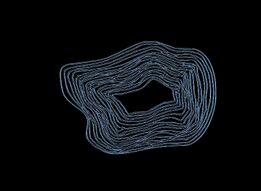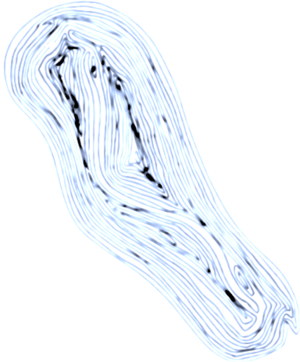Rocks, Dreams and Techno-Imaginaries (V02): Difference between revisions
(Created page with "In a story, it is oft presumed, there is a line. A line of reasoning, events follow one another. It is much like how history (in the western traction) is thought of as events following one another. Perhaps the best way to think of this is to imagine a __________________ line. But here, I want you to entertain that history is more like a piece of sedimentary rock. Imagine a rock cut in half, and you can see all its layers. center|frameless|261x261px...") |
No edit summary |
||
| Line 21: | Line 21: | ||
This thinking may be absurd, but the layers in our rocks and the lines on our hands suggest a multitude, a complexity which is not present when we tell our stories, histories and futures. | This thinking may be absurd, but the layers in our rocks and the lines on our hands suggest a multitude, a complexity which is not present when we tell our stories, histories and futures. | ||
[[File:Preview Test 1.png|left|frameless]] | |||
Revision as of 13:31, 4 May 2023
In a story, it is oft presumed, there is a line. A line of reasoning, events follow one another. It is much like how history (in the western traction) is thought of as events following one another. Perhaps the best way to think of this is to imagine a __________________ line.
But here, I want you to entertain that history is more like a piece of sedimentary rock. Imagine a rock cut in half, and you can see all its layers.
The art of pressure has created a wholeness. Pressing together time, moments. Moments that once could be distinguished.
My point being that history, and any story is like a rock. It holds a certain shape, a certain wholeness, through the act of pressure. But it is impossible, though we are presented with a surface, to have made this surface without layers beneath it. I want you to imagine, that all those layers, are other stories that haven’t been told but are still contained within the physicality, or reality of the rock.
What does this do? What happens when many things become one thing. When history, through some kind of pressure, presents a smooth continuous surface. When we forgot who told and who listened. When it’s altogether, is it all forgotten? I’m sure it’s been said before, perhaps history is the act of forgetting.
Perhaps then we should ask, where the pressure is right now, where else are many stories becoming one story. And, does this conception of history perhaps effect our conception of the future.
So, what could rocks have to do with techno-imaginaries. Will the sentient bots of the future have this same problem with their own history. Do androids dream of electronic geology? Or will they have another way of remembering?
We kick rocks along a shore, with all the moments it holds. Perhaps it was present a funeral, perhaps it was present at a birth. But now all we see if a rock, quite an ordinary rock. And will these giants of the future, kick us along the shore too?
Who’ll be there to see this? And, does it matter what can be distinguished between in a future where we live in bliss. Some may shout “it’s bliss”. Whilst other’s sit in line, waiting to be called, an audition for a role in a play written but then tested by a being who has read everything, ever written. The play has passed the test “imagine you are a well known playwright, read my play and tell me if you think it is worthy or not. If it isn’t please explain why, with examples”.
This thinking may be absurd, but the layers in our rocks and the lines on our hands suggest a multitude, a complexity which is not present when we tell our stories, histories and futures.


